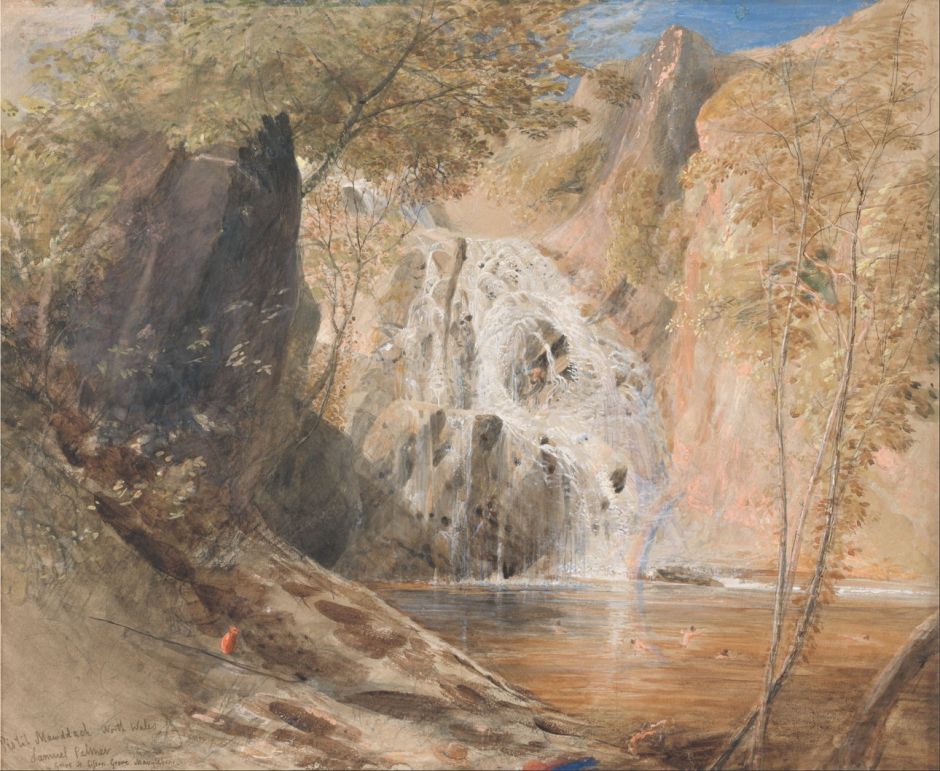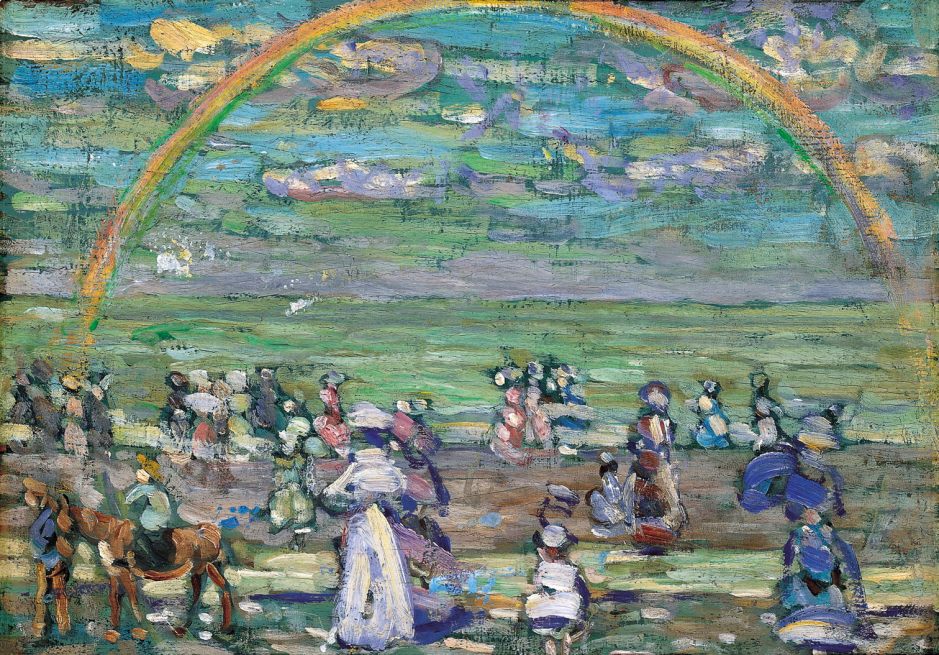In addition to their many associations with myth, legend and religion, rainbows appear in many non-narrative paintings, particularly landscapes.

Annie Swynnerton’s undated portrait of Joan of Arc combines the imagery of religious devotion, visions, and military service for God and country. Unusually her eyes aren’t staring in shock, but closed. She’s praying, a huge and heavy battle sword between her fingers. In the sky behind her is a rainbow, as a reminder of a much earlier covenant between God and man.

One of the best-known paintings featuring a double rainbow is John Millais’ The Blind Girl of 1856, where it emphasises the effects of the girl’s lack of sight. A rarer natural phenomenon, the colours in double rainbows have caught some artists out, as contrary to expectations, their order is reversed in the outer of the two bows. Millais here gets them right.

Peter Paul Rubens’ late Landscape with a Rainbow from about 1638 shows the countryside and its people at work. At the left, the harvest is in full swing, with haystacks being constructed. The wagoner passes by a couple of young milkmaids, one of whom is carrying a vessel on her head, and being propositioned by a man. Alongside them is a small herd of cows waiting to be milked, and above them all is a resplendent rainbow.

Joseph Anton Koch’s Heroic Landscape with Rainbow (1812) appears to have been modelled after Poussin’s idealised landscapes, but shows both primary and secondary bows with the same order of colours, which never occurs in nature.

Constable’s career-long obsession with skies didn’t work out well in some of his later finished paintings. Salisbury Cathedral from the Meadows (1831), one of his series of the cathedral, was perhaps overdone with its dark storm clouds, rainbow and a bolt of lightning.

The double rainbow in Constable’s 1835 view of Stonehenge has faded and become confused with its clouds, although their colour order is correct.

When Samuel Palmer first visited Pistil Mawddach, North Wales (1835-36), his initial watercolour shows this waterfall now known as Rhaeadr Mawddach, on the upper reaches of the River Mawddach near Snowdonia. At its foot the spray has generated a small rainbow fragment.

Ford Madox Brown painted his famous view of Walton-on-the-Naze in 1860. He’s believed to have started this when he visited the coastal village in north-east Essex in late August 1859, but cannot have worked long at it en plein air before returning home. In addition to fine detail, it incorporates two unusual features: ephemeral lighting effects by way of its rainbow, rising full moon, and setting sun, and inclusion of the artist and his family as its main figures.

A November Rainbow – Dolwyddelan Valley, November 11, 1866, 1 p.m. (1866) is one of Alfred William Hunt’s most celebrated paintings, with its elaborate composition and rich colours. It shows the valley of the River Lledr near the hamlet of Bertheos, on the eastern side of the Snowdon range in North Wales. Distant on the right is Dolwyddelan Castle standing proud on its rock platform, and a dazzling double rainbow lights the whole valley.

Beneath the spectacular double rainbow of Frederic Edwin Church’s Rainy Season in the Tropics, from 1866, a river drains the distant valley, and two people are walking their mules along a wet and rocky track at the lower right.

Church found another spectacular double rainbow in The Aegean Sea, which he painted in about 1877.

In the closing years of Jean-François Millet’s life, he painted a commissioned series including his startling study of light, Spring (1868-73). This features a double rainbow at the upper left, with fleeting sunshine flooding the centre and dazzling on the abundant blossom. From the crops and seasonal flowers in the foreground to the inky black shower-clouds in the sky, this is a perfect summary of Spring in the countryside, for once devoid of his toiling labourers.

The Rainbow, Pontoise, which Camille Pissarro painted in 1877, was shown at the Third Impressionist Exhibition. It’s a panoramic view of the fields around the neighbouring area of Épluches viewed from Pontoise, with a more modest and realistic rainbow.

Rainbows are among the transient effects of light that had always interested Jules Breton. The Rainbow (1883) is the most dramatic of those he painted, and was shown at the 1883 triennial exposition of the Salon, where its rough facture must have appeared quite progressive.

Camille Pissarro is one of the artists of the late nineteenth century who painted silk fans. Among his last is this Shepherds in the Fields with a Rainbow from 1885.

Finally, Maurice Brazil Prendergast painted this Rainbow on a panel in 1905.

